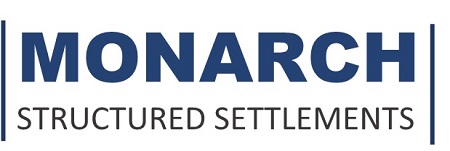By Kyle M. Bollman
Structured settlements are tax-free or tax-deferred periodic payment arrangements, which have been historically funded with guaranteed fixed annuities and provide safety and security to settlement recipients. Structured settlements were first utilized in the United States in the 1970s. Since that time, they have continually been strengthened and codified through IRS Revenue Ruling 79-220 in 1979, the Periodic Payment Settlement Act of 1982, IRS Private Ruling 8333035 in 1983, the Tax Reform Act of 1986, and the Small Business Job Protection Act of 1996. Additionally, the National Structured Settlements Trade Association (NSSTA) helped create the Congressional Structured Settlement Caucus, where Republicans and Democrats work together on a bipartisan basis to enhance the awareness of structured settlements. Structured settlements are also strongly supported by the American Association for People with Disabilities (AAPD), the National Consumer League (NCL) and the Claims and Litigation Management Alliance (CLM), among many other groups and associations.
What do Structured Settlements Offer?
Needless to say, structured settlements are very important. They offer much-needed protection, security, and peace of mind for over 30,000 settlement recipients annually. They offer guaranteed income for specific periods of time or someone’s lifetime, provide college funds for children, and cover future medical costs for the severely injured. They also supply income to meet the daily needs of hundreds of thousands of Americans. Most importantly, they help prevent the future dissipation of valuable settlement proceeds and keep individuals from being added to government welfare programs.
Unfortunately, most Americans who go through the long, exhausting, and costly settlement process are never made aware of the many advantages structured settlements can provide. Plaintiff attorneys, defendant insurance companies, and self-insureds typically act as the “gatekeepers” to the structured settlement process. Generally, only minors and catastrophically injured individuals have been presented with structured settlement options. Why is this the case? We know that it is primarily because these “gatekeepers” believe that many people would not be interested in currently low fixed-rate annuities, even considering the large tax advantages they bring.
What happens when a plaintiff is not told about the many benefits of receiving a structured settlement? They are then denied the ability to receive significant tax advantages and, unfortunately, often spend or lose all of their settlement proceeds within a few years. Important lessons were learned in 2001 when a trial attorney and guardian ad litem were forced to pay $4.1 million to settle a claim pertaining to a physical injury case where a structured settlement was not discussed or offered to the plaintiff.1 Structured settlement consultants provide many solutions to easily and effectively educate the injured party, thereby protecting plaintiffs, their legal counsel, and others in the settlement process.
How is the Structured Settlements Industry Evolving Today?
Structured settlements are going through an invigorating evolutionary process at present. As a result, the industry should grow from $5.5 billion per year to $10 billion or more over the next 3-5 years. To get there, we must look at the current economic environment.
Due to historically low U.S. Treasury yields, the rates of return on structured settlement annuities are also near historic lows. These low yields have put pressure on the return on equity of the life insurance companies that offer structured settlement annuities, driving many insurers out of the marketplace. This would appear to be a very negative development for the industry; to the contrary, it has allowed the remaining life insurers in the space to focus on the business that is most impactful to their bottom line. Some life companies like short-term money, while others like longer-term money and price themselves accordingly. The result is fewer companies more effectively realizing their profit objectives.
Fewer life insurance companies offering structured settlement annuities and historically low fixed rates have created an opening for alternative structured settlement funding vehicles. Industry innovators have responded by creating unique solutions that allow claimants (and their contingency fee attorneys) to choose from a variety of funding assets to best meet their needs. In addition to the fixed annuity, structured settlement recipients may also utilize U.S. Treasuries, fixed-indexed annuities, and now market-based structured settlements. Clients frequently utilize one or more of these solutions to best address their short-, medium-, and long-term income needs.
Fixed-Indexed Annuities
Similar to fixed annuities, fixed-indexed annuities offer guaranteed principal protection along with some market participation when the chosen index performs positively. Clients can typically choose from several indexes, such as the S&P 500. If the index doesn’t perform in a given year, clients never lose money. If an index outperforms, the client receives a portion of the increase in the index, subject to caps that allow the life insurance company to provide the downside protection to prevent any loss of principal. This gives the client the opportunity to increase their annual cash flow and potentially do better than a fixed annuity.
Market-Based Programs
Market-based funding assets are the newest and most interesting development in the world of structured settlements. Different from fixed and fixed indexed annuities, market-based structured settlements do not offer guarantees of principal protection, as the assets are invested directly in the market. These programs allow the assets to be managed by a fiduciary from many different financial institutions. The result is completely tax-free principal and gains in physical injury-related cases, or tax deferral in non-physical injury cases (employment, contract dispute, environmental, construction defect, and most other types of legal settlements). Such programs are now also being used in athlete and celebrity endorsement transactions.
Due to the wide array of new structured settlement funding vehicles, it is now more important than ever for all settling plaintiffs to be educated about their structured settlement options. Plaintiffs have a one-time pre-settlement opportunity to make these decisions. Once the client or their law firm has taken constructive receipt of the settlement dollars, they completely lose these valuable tax advantages.
To learn more about the changes in the structured settlements industry, please contact a Monarch Consultant today.
1 Josephine Grillo, As Guardian and As Next Friend for Christine Grillo, A Minor v. Tom Pettiette, T.E. Swate, and Hardy Milutin & Johns, 96th District Court, Tarrant County, TX, Cause No. 96-145090-92.
IFS and its affiliates do not provide advice or services related to the purchasing of, the selling of, or investing in securities or other financial instruments. Any discussion of securities contained herein is not intended or written to be used, and cannot be used, as advice related to the purchasing of, the selling of, or investing in securities or other financial instruments. IFS does not provide legal, tax, or accounting advice or services. Any discussion of legal or tax matters contained herein is for illustrative purposes only and not intended or written to be used, and cannot be used, as legal advice or for avoiding any penalties that may be imposed under federal tax laws.


